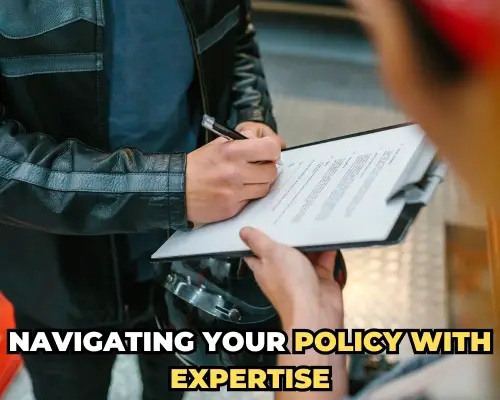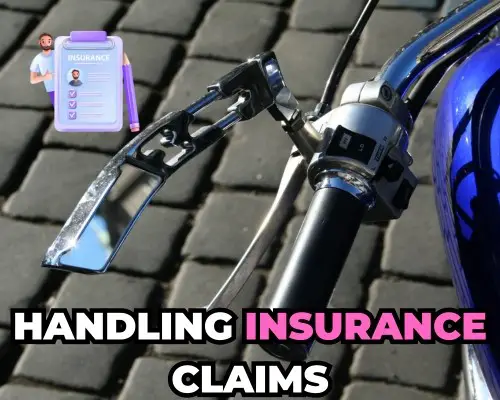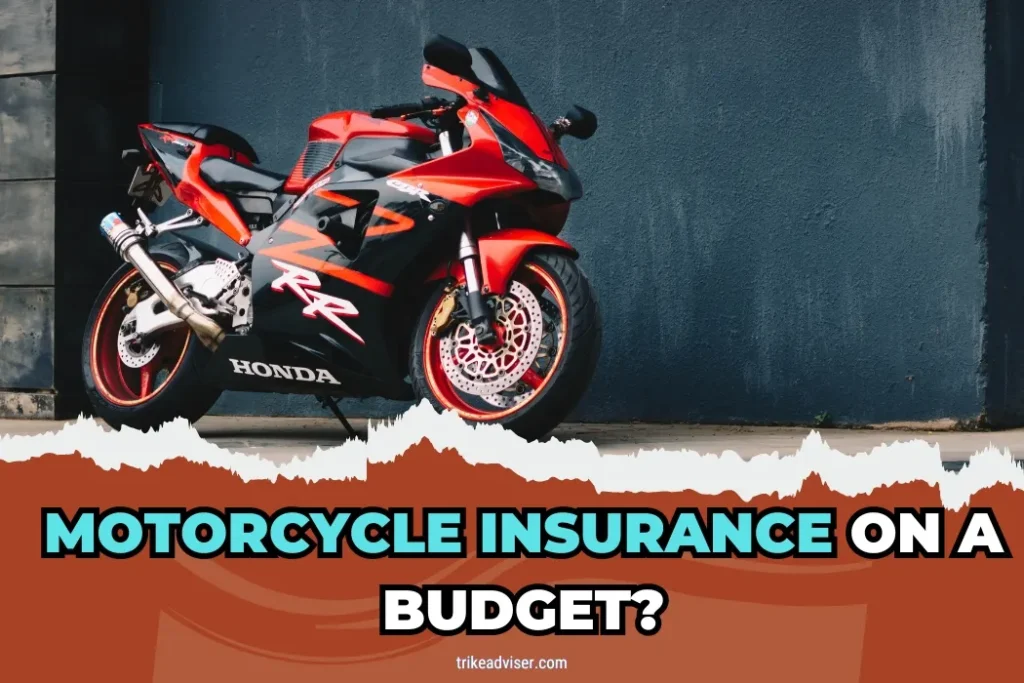Think getting motorcycle insurance must cost an arm and a leg? Think again. Riders everywhere feel the pinch of premiums. It stings, especially when you ride safely.
But here’s a secret: slashing those rates isn’t a pipe dream. With a few clever moves, you can keep more cash in your pocket. Wondering if this is for real? You’re not alone.
Every rider wants to save without skimping on coverage. We’ve got the lowdown on cutting costs without cutting corners. If you’re nodding along, wishing for lower bills, stay tuned.
These four hacks aren’t just talk. They’re your ticket to cheaper, smarter insurance. Ready to ride the wave of savings?
Motorcycle Insurance on a Budget? These 7 Hacks Could Slash Your Rates

Avoid Phone Policies
You might think talking to an agent gives you an edge. Not quite. Phone reps are sales folks. Their job? To upsell, not save you money. Ever filled out an online form? That’s what they’re doing too.
Only difference? They might mishear you, locking in details you didn’t want. Stick to online forms. It keeps you in control, minimizing errors and unnecessary add-ons.
Reject Renewal Quotes
Renewal notices often come with a price hike, disguised as convenience. Don’t bite. These offers can be 20-30% higher than what’s out there. Sounds unfair, right? It is. The trick? Shop anew each year.
Though it sounds tedious, it’s your best shot at a fair rate. Sure, negotiating over the phone might work occasionally. But why gamble? Stick to new quotes annually for the best rates.
Use All Price Comparison Sites
Ever rely on just one comparison site? Big mistake. Diversify your search. In the UK, this means hitting Confused.com, MoneySuperMarket.com, CompareTheMarket.com, and GoCompare.com.
It’s a bit of admin work, yes. But treating yourself as a new customer on each site? That’s how you snag the best deal. Each comparison might unveil a gem you would’ve missed otherwise.
Visit Insurer Sites Directly
Found a great deal? Don’t stop there. Head to the insurer’s website. Sometimes, comparison sites tack on fees. Direct quotes can shave off these extras. Say MCE topped your comparison list.
Going directly to MCE might uncover additional savings. It’s the small details, like specific bike security measures, that comparison sites might overlook. These nuances can further reduce your quote.
Input Comprehensive Details
When filling out forms, detail is key. Security features, riding qualifications, other owned vehicles—every bit helps.
These details can chip away at your premium, bit by bit. The sum of these small savings? A noticeably cheaper insurance rate.
Beware of Auto-Added Extras
Comparison sites and insurers love to pre-tick boxes. Helmet cover, leather protection, breakdown cover—sounds great, but do you need them?
These features, while useful, often come with a cost. Make sure they’re choices, not assumptions. Breakdown cover? A personal favorite. But helmet and leather cover? That’s a pass for me.
Assess Value Versus Cost
Finally, weigh the cost against your needs and your bike’s value. High excess and premiums on a low-value bike don’t make financial sense.
Instead, consider fewer comprehensive options. However, if you can comfortably afford full coverage without feeling the pinch, why not? Peace of mind is priceless.
The Impact of Your Motorcycle Choice on Insurance Rates

Picking your ride is more than a heart decision; it’s a smart financial move too. Here’s a closer look at how the right (or wrong) motorcycle can affect your insurance rates, with a blend of personal insights and expert advice to guide you.
High-Tech Motorbikes: The Exciting Feel But There’s a Cost
The Quick Dilemma: Envision the exhilaration of operating a Suzuki Hayabusa, a top-performing motorcycle globally. It’s thrilling, but the insurance cost is high.
Why? Because insurers see them as a ticket to high-speed adventures, which can end in costly claims.
Personal Note: A friend once swapped his cruiser for a sports bike. His insurance? Doubled.
The lesson? Check insurance costs before you buy. It might influence your choice more than you think.
Safety Features: Your Financial Shield on Two Wheels
Invest in Safety, Save on Premiums: Bikes with advanced safety features like ABS not only offer you protection but also act as a guardian for your wallet.
Insurers give nods and discounts to riders prioritizing safety because it reduces the risk of accidents.
A Real-World Tip: Adding safety gear might seem like an extra expense, but it pays off. I’ve seen discounts of up to 10% for bikes equipped with ABS. It’s like the bike’s paying for its insurance.
Crashworthiness: The Armor Against High Premiums
Choosing the Tank Over the Tin Foil: Bikes that can take a hit and protect you not only fare better in accidents but also in the insurance office. Higher safety ratings often lead to lower premiums.
Expert Advice: Always check a bike’s crash test results if available. A motorcycle that’s a fortress on wheels might save you more than just medical bills—it could lower your insurance costs significantly.
Theft Rate: The Attractiveness Quotient
Popularity Contest: Popular models, especially Hondas, are like magnets to thieves. High theft rates mean insurance companies could charge you more to cover the potential loss.
Insider Tip: After my Honda was stolen, my next bike was a less-targeted model. Result? My insurance premium dropped. Sometimes, flying under the radar has its perks.
Customizations: Personality with a Price
Your Bike, Your Canvas: Customizing your motorcycle makes it uniquely yours but also uniquely expensive to insure. Custom parts can be costly to replace, raising your premium.
A Cautionary Tale: I once added a custom exhaust and paint job to my ride. It looked fantastic but raised my insurance by 20%. Document every modification; you’ll need to prove their value if you ever claim.
It’s important to take into account both the initial cost of ownership and the recurring insurance costs when selecting a motorcycle.
High-performance bikes and popular models might increase premiums, while safety features can offer savings. Remember, the right motorcycle doesn’t just fit your lifestyle—it fits your budget too.
Navigating Your Policy with Expertise – Reading the Fine Print

Diving into your motorcycle insurance policy often feels like venturing into a dense forest without a map.
The key to mastering this terrain lies not just in reading but in understanding the signs and signals hidden within the legalese.
Here’s how to turn the fine print into your roadmap, ensuring a journey with no unpleasant detours.
Decoding Common Exclusions and Limitations
- The Modification Maze: Think of your bike as a canvas. Each modification adds personal flair but also complexity to your insurance landscape.
Before embarking on upgrades, consult your insurer. It’s like asking for directions before taking an unknown path; it ensures your journey remains covered.
- Personal Items: More Than Meets the Eye: I learned the hard way when my backpack, left in my bike’s storage compartment, was stolen. Not only did I lose my gadgets, but I also discovered such personal losses aren’t covered by default.
It’s crucial to consider additional coverage for personal belongings or risk facing a similar tale of loss.
- Business Ventures on Two Wheels: Using your bike for business, like a delivery side gig, might seem efficient, but it complicates your insurance coverage.
Standard policies typically draw a line here, excluding business use. If your motorcycle wears multiple hats, ensure your policy does too by securing commercial coverage.
Unraveling the Importance of Terms and Conditions
- A Story of Coverage and Clarity: Understanding your policy inside and out is akin to having a detailed map in uncharted territory.
It equips you with the knowledge to navigate through claims and coverage discussions with confidence, ensuring you’re never lost or out of depth.
- Avoiding the Pitfalls of Assumptions: I once assumed my off-road adventures were covered, only to find out too late that my policy was strictly on-road.
This oversight turned a minor accident into a major expense. It taught me the critical lesson of never assuming and always confirming coverage specifics.
- Tailoring Your Policy to Your Journey: With a deep understanding of your policy’s terms, you become the architect of your coverage.
It allows you to build a policy that mirrors your riding lifestyle, ensuring you pay only for the protection you need, much like packing for a trip where every item is essential and nothing superfluous weighs you down.
Personal Insights and Added Value
- The Customization Conundrum: After adding high-performance parts to my bike, I reached out to my insurer to discuss how these changes impacted my coverage.
This proactive approach not only ensured my modifications were protected but also highlighted the importance of open communication with your insurer. It’s a practice as crucial as checking your bike before a long ride.
- The Hidden Benefits of Reading Closely: Delving into my policy, I discovered benefits I wasn’t aware of, like roadside assistance and trip interruption coverage.
These hidden gems can often go unnoticed unless you take the time to explore your policy thoroughly, proving that sometimes, the most valuable insights are buried within the fine print.
Handling Insurance Claims – Tips for a Smooth Process

Filing an insurance claim is akin to setting sail on uncertain waters. It requires not just a map, but a seasoned sailor’s intuition to navigate successfully.
Here’s how to steer your ship through the tempest of the claims process, guided by the stars of wisdom and experience.
Charting Your Course: A Step-by-Step Voyage
- First Light: Contact your insurer at the first sign of trouble, much like signaling a lighthouse. Policies have hidden shoals, like time limits for reporting, that can easily beach your claim if you’re not swift.
- Plotting the Details: Provide a detailed chart of the incident. Just as a captain logs every wind shift and wave, your insurer needs a complete and accurate account. Missing details can lead you off course, delaying your journey to resolution.
- Keeping a Captain’s Log: Document all communications with your insurance company as meticulously as a ship’s log. This record will be your compass if you find yourself lost in a sea of bureaucracy.
- Questioning the Stars: If the settlement offer seems misaligned, challenge it by asking for the specific articles of your policy that apply. It’s like questioning an old sea chart; sometimes, you discover it’s outdated or misread.
- Negotiating the Narrows: The first offer is often a low tide, revealing the rocks beneath the surface. Be prepared to navigate these waters with negotiation, ensuring you don’t run aground on a lowball offer.
- Cataloging Your Cargo: Keep meticulous records of all expenses incurred, as a quartermaster would. These are your trade goods when negotiating your claim’s value.
Avoiding the Sirens’ Call: Common Pitfalls
- Avoiding Hasty Anchorage: Don’t rush to accept a settlement, no matter how serious the call. The first offer is rarely the treasure it appears to be. Patience and negotiation can lead to more favorable winds.
- Consulting the Sextant: When unsure of the fairness of an offer, seek guidance from a seasoned navigator—be it a claims adjuster or a legal advisor. Their expertise can help you avoid the reefs.
- Hiring a First Mate: An insurance claims professional can be a valuable crew member, offering expertise and support that can steer your claim to more favorable shores.
- Eyes on the Horizon: Scrutinize your insurance estimate for hidden details. Understanding the nuances of depreciation, deductibles, and overhead can help you negotiate a better settlement, much like understanding the currents can speed your voyage.
- Arming Your Cannons with Evidence: In disputes, arm yourself with concrete evidence. Receipts, photos, and expert opinions are your broadsides against the insurer’s arguments.
- Resisting the First Port: Never accept the first offer without negotiation. Your claim’s journey doesn’t end at the first sight of land; better harbors lie ahead.
- Alternative Passages: If direct negotiation feels like sailing into a hurricane, consider alternative routes like mediation or arbitration. Sometimes, a course change is necessary to reach your destination.
On my journey through a claim, I discovered the value of patience and persistence. After a minor accident, the initial settlement offers barely covered the repairs.
By meticulously documenting the damage and negotiating with evidence, much like negotiating with a distant port for a better price on cargo, I secured a truly fair settlement.
It was a lesson in the importance of understanding not just where you’re going, but how best to get there.
As an Amazon Associate, I earn from qualifying purchases, at no additional cost to you. Read Our Affiliate Disclosure.

